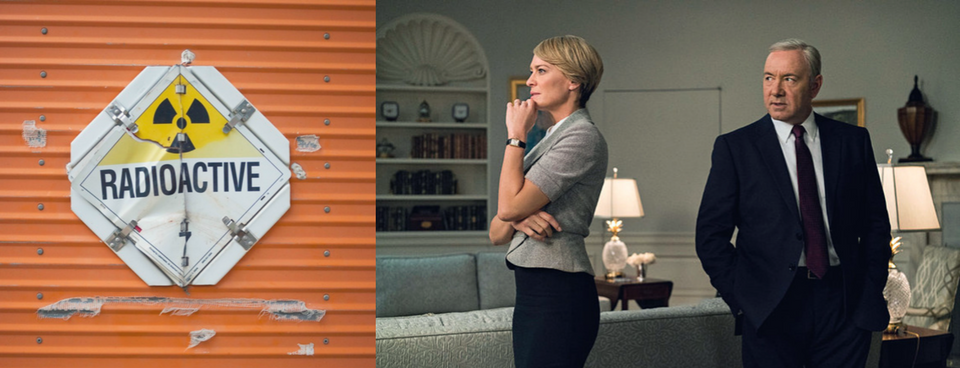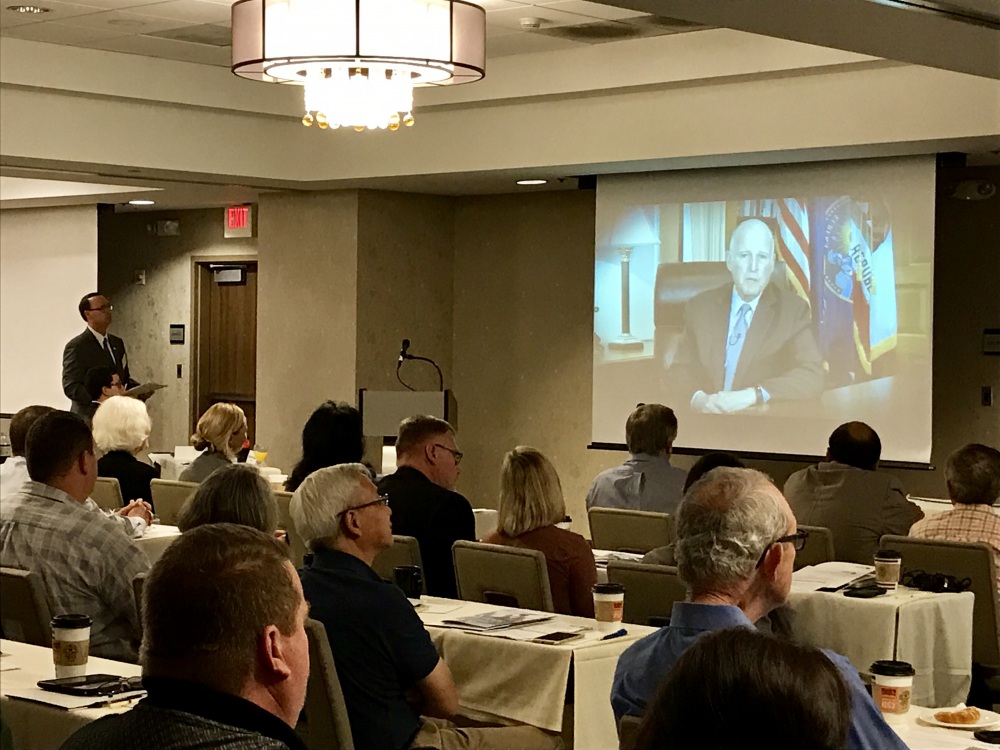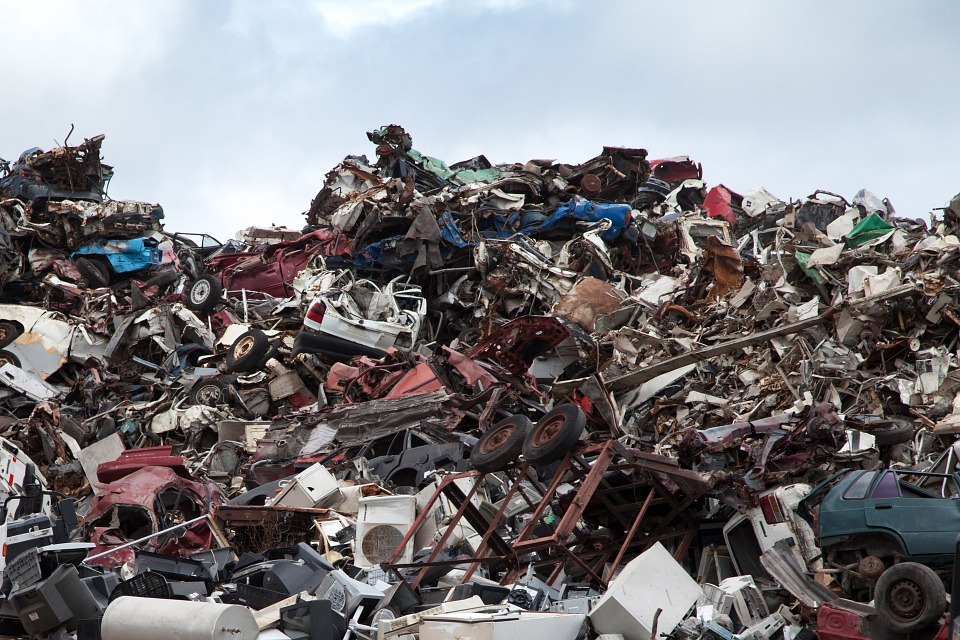
Rachel Staley Grant
Deputy Vice President, Communications
Atomic Pulse
Spoiler Alert!
Stop Reading if you’re a House of Cards fan and you haven’t
gotten through the 7th episode of Season 5!
But if you have – you’ll recall that amid all the drama and
deception, Frank, Claire and senior military and White House officials are suddenly
whisked down to the bunker amid reports that a truck carrying radioactive cesium-137
sources has gone missing.
The scene begins when Secret Service agents rush into the
Oval Office. “Madame President, we need to evacuate you now!”
Once safely ensconced behind thick steel doors underground,
the team gets a readout from General Braeger: “Homeland received word from Cybercom
that a truck carrying three cesium-137 irradiators missed two check points. It
was supposed to be travelling from Atlanta back to the manufacturer in
Baltimore … the truck’s GPS is offline.”
The FBI director goes on to explain that there is enough
radiation on the truck to impact a 30-mile radius, and even if the cesium-137
is not weaponized, the misuse or mishandling of it could be disastrous. Frank
asks how it could have happened, and Braeger reports that there has been some
“increased chatter” from the series’ fictional terrorist group, ICO.
“If this is a dirty bomb,” Frank says grimly, “then we’ve
entered into a different world.”
So – could something like this happen? Absolutely. House of Cards
may be TV fiction, but the “dirty bomb” threat is real.
The very same radiological isotopes that can make
life-saving blood transfusions and cancer treatments possible, such as
cesium-137, can also be used to build radiation-spewing “dirty bombs” – and the
radioactive sources are located at thousands of sites across more than 150
countries. Many of them are poorly secured and vulnerable to theft.
The House of Cards’ terrorist group doesn’t exist, but
real-life radical terrorist organizations such as the Islamic State have said
they are looking to acquire and use radioactive material to build “dirty bombs”
– and there have been a number of incidents where material has gone missing. And
as Frank Underwood suggested, the implications would be significant: If a
“dirty bomb” went off, it would release high doses of radiation and contaminate
major sections of a city—triggering panic, increasing cancer risks for those
exposed, and potentially costing billions of dollars to clean up.
NTI is working with governments and industry to raise
awareness about the threat, develop more secure systems for protecting
radiological sources, and replace dangerous isotopes with alternative
technologies, where feasible, for permanent threat reduction.
Learn more about our work to reduce radiological risks here.
Sign up for our newsletter to get the latest on nuclear and biological threats.
NTI, California officials hold radiological workshop to address dirty bomb threat
NTI Co-Hosts Second Regional Workshop on Radiological Security in Central Asia
Addressing Radiological Risks Posed by "Orphan Sources"



